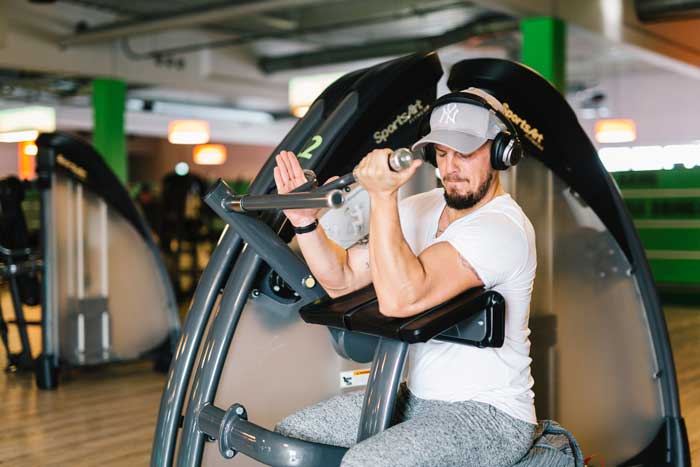Over the past few years, wearables and other new technologies have been the most dominant trends in fitness. But in a fitness landscape that continues to evolve rapidly after the massive changes COVID brought both to personal fitness routines and the health club landscape, several other trends are important too. Especially for facility managers who want to effectively provide the personalized and social experiences that can attract and retain members over the long haul.
Technology Trends Upward
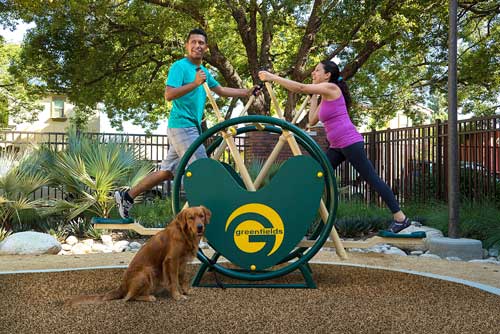
In the American College of Sports Medicine’s annual survey of top worldwide fitness trends, wearable technology reigns as the No. 1 trend for 2025. It continued to move up from No. 3 in 2018 and No. 2 in 2021 in rankings based on perspectives from 1,745 fitness professionals, including personal trainers, exercise physiologists, and research faculty. Participants were surveyed on 45 trends across the seven categories of exercise setting, fitness business model, special populations, training modalities, digital technology, programming, and recovery-based therapies.
Fitness trackers, smartwatches, heart rate monitors, and GPS tracking devices continue to play a growing role in helping people get better information on things like their physical activity, health markers, sedentary behaviors, sleep, stress, and other factors to assist effective goal setting, coaching, and personalized fitness programming. Coming in second in the ACSM report for the first time was mobile exercise apps, which can complement wearables—and which also have ascended in the survey’s ranks from No. 20 in 2023 and from No. 7 in 2024.
Fitness Finds a Hybrid New Normal
As wearables and apps saw growing momentum in the heart of the COVID pandemic, gym members have embraced these technologies, as well as home workout equipment and outdoor exercise. The result is fewer visits per week to the gym as people embrace a more flexible workout approach. According to the 2024 U.S. Health & Fitness Consumer Report from the Health & Fitness Association, average attendance by fitness facility members remains well below pre-COVID levels, at 81 days per member in 2023 vs. 119 days in 2019. The share of members attending 200 days or more (about four days a week) dropped from 19.7% in 2019 to 11.5% in 2023, and the number attending 100 to 199 days per year fell from 26.9% in 2019 to 14.7% in 2023.
Over the same period, member churn increased only by 0.3%, while the overall number of Americans with a fitness facility membership actually reached an all-time high of 72.9 million Americans in 2023. More Americans are finding value in fitness facility memberships than ever before, despite getting to the gym less frequently. This may signal a “new normal” for the industry, where convenience and flexibility take precedence, and members use fitness facilities as part of a multifaceted workout approach that also includes outdoor exercise, sports participation, and other fitness solutions like fitness apps and home equipment.
Programs for Older Adults a Priority

Ranking third in the ACSM survey of top fitness trends for the second consecutive year was the development of fitness programs for older adults—which the ACSM notes is a critical strategy for the overall health, chronic disease prevention, quality of life, and independence of this demographic. For fitness facilities, it can also be a good strategy for growing the business and boosting member retention, according to Colin Milner, CEO of the International Council on Active Aging.
“If you’re not working with older adults, you’re turning your back on 50% of the adult population that has 75% of the disposable income,” Milner said. “When I first started, the older population was called a special population. And that was because of a lack of knowledge on how to work with people that have chronic diseases. Now almost everybody over the age of 65 has a chronic disease—and they’re special because they’re a large population with large pocketbooks.”
For that demographic, Milner is seeing fitness trends that include a focus on recovery and longevity, and person-centered solutions that include assessment, and individually prescribed health and wellness plans. He also noted the increasing use of technologies that support these efforts, from robotic massage tables to fitness equipment that will preset your resistance for you and provide feedback on whether you’re working too light or too hard. “That’s also very good for people in the initial stages of memory loss, because they’re not having to remember all of that,” Milner said.
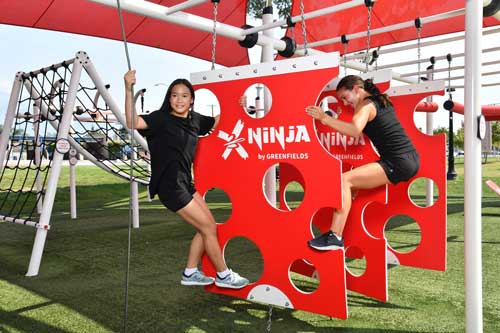
Perhaps surprisingly, the top technology that Milner is seeing organizations purchase for fitness in the senior living market is virtual reality (VR) headsets. “Connecting through VR, I can mimic what I’m doing with games. I can exercise, I can experience travel, I can meditate on the top of the mountain—all these kinds of things that you can’t do day-to-day in your average facility,” Milner said. “Lots of facilities are now creating VR classes where you are there doing the activity along with everybody else, but are able to adjust based on your capacity.” Milner is even seeing VR employed by staff to get a virtual understanding of what it’s like to have dementia and Alzheimer’s, thereby gaining the empathy they need to serve these clients more effectively.
Milner is also seeing a growing focus on brain training. “Nobody wants to lose their cognitive abilities, but many of us are outliving our cognitive function,” Milner said. To combat this, more technologies and fitness approaches are emerging that include dual-task exercises that train the mind and body at once. One example Milner noted is a new cognitive fitness franchise that recently launched called Marbles Brain Body Fitness. The new chain aims to address what it claims is the No. 1 concern of the affluent 55-plus demographic in a floorplan that requires as little as 1,200 square feet.
To meet the needs of older members successfully, Milner suggests creating a welcoming and not overly loud environment featuring equipment designed and spaced to be accessible to all users, including those with wheelchairs and walkers. “I would also make sure that my staff knew what the hell they were doing, and that they were trained in the early stages of memory loss,” Milner said. “Because if somebody starts asking you a question multiple times, and you start getting aggravated at them, that will blow them out the door.”
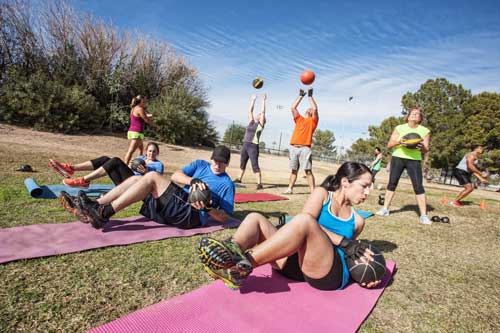
To help get older members in the door in the first place, Milner also recommends policies that let people try the club for a little while without a big commitment. “If an older adult likes what you have, they will stick with you more so than a younger population,” he said.
The Health & Fitness Association’s 2024 U.S. Health & Fitness Consumer Report confirmed this, finding that gym membership tenure increased with age in 2023. While members under age 34 had an average tenure of roughly three years, older members average between 6.5 and 7 years, an indication that older members do tend to remain more loyal to fitness facilities that meet their fitness, programming, and social needs.
According to Milner, the best way to do that effectively is to listen. “Older adults will tell you what they like to do,” Milner said. “In many of the senior living communities, about 80% or 90% of the programs are delivered by their residents … They will tell you what they want, and they can create clubs within your club that they will run. You don’t have to.”
Exercise for Weight Loss Evolves
Holding steady from the previous year at No. 4 in the ACSM trend survey is exercising for weight loss. As the ACSM notes, regular exercise is an essential part of a multicomponent strategy for taking weight off and maintaining weight loss over time. The Health and Fitness Association agrees and is emphasizing the importance of exercise even as more Americans see weight-loss success using weight-loss medications.
“We see a continuing use of GLP-1 prescriptions for weight loss, diabetes, and other treatments,” said Jeffrey Solsby, senior vice president of communications for the Health & Fitness Association. “We believe that this trend will continue because for the first time there are signs of a downward-trending topline in the number of obese Americans. A key topic we are discussing as part of our advocacy efforts with government and NGOs is that prescriptions alone are only part of the treatment—diet, exercise, counseling, and ongoing dialogue with medical professionals are all key tools in the toolbox.”
In fact, a recent study found that participants who took a GLP-1 drug in tandem with a supervised exercise program kept an average of more than 6 more kilograms of weight off a year after stopping the drug treatment and supervised program than another group that had been taking the drug without an accompanying exercise program.
Research seems to show that the proportion of lean mass lost from GLP-1 drugs is similar to that experienced by people who lose weight solely through calorie reduction. By promoting weight loss, the drugs may still improve a patient’s ratio of lean mass to body mass overall. For these patients, regular cardio and especially resistance exercise are recommended—and crucial—to support long-term success.
Strength Training Gains
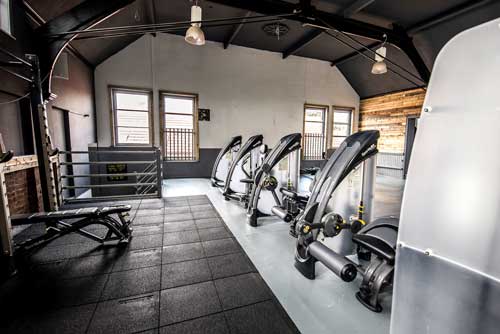
Traditional strength training ranked No. 5 in the ASCM trends survey and has also been identified as a key ongoing trend by the Health & Fitness Association. “Traditional strength training continues to gain scientific and media attention as an essential tool in the overall exercise toolbox,” Solsby said.
Ruben Mejia, EVP Americas for a gym equipment manufacturer based in Everett, Wash., is seeing this demand firsthand. “Ever since COVID, strength has been on the rise, and it doesn’t seem to be slowing down anytime soon,” Mejia said. “Many more functional strength areas are being built.” Mejia also credits the wealth of educational information on social media channels like YouTube and Instagram for helping people get started. “It’s allowing people who can’t afford a trainer or don’t want to use a trainer to be able to try some of these things on their own.”
In adding more functional workout space, Mejia is often seeing facilities convert a small portion of space formerly occupied by underused cardio equipment as a first step to get people’s feedback before making larger-scale changes. This approach can minimize a club’s risk while also paving the way for long-term improvements that better appeal to customers as well as the bottom line. “Cardio is expensive, and cardio requires maintenance,” Mejia said. “But if people aren’t using it, well that’s money that you’re saving. And if you invest into strength [training equipment], strength is going to last you forever.”
Allison Abel, director of marketing for a leading manufacturer of outdoor fitness equipment based in Anaheim, Calif., is seeing cities make similar investments in their parks. “Over the past few years, we saw cities updating outdated fitness equipment installations that have been serving the communities for over 12 to 15 years with current applications, such as wheelchair-accessible designs, as well as adding functional fitness and calisthenic options,” Abel said.
Inclusive Fitness Expands
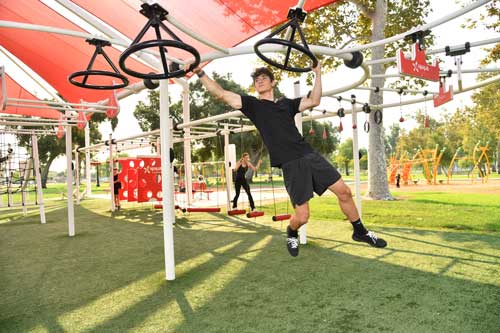
Abel is also seeing ADA requirements spur a positive shift toward more accessible fitness areas, and stresses that the mental health benefits of exercise, time outside, and time with loved ones are also facilitated with these designs. “We believe that facility managers looking to make a difference should be investing in amenities that are designed to serve a wide variety of ages and ability levels, so that all their visitors can enjoy the benefits of outdoor exercise together,” Abel said.
Mejia is also seeing some active aging facilities with great fitness centers starting to sell some public memberships. “Rather than keep it to themselves and let it be a cost center, they’re opening up to the public for x number of memberships,” Mejia said. “So it brings money into the fitness center, and you also have people of the community interacting with the folks in the active aging communities.”
Mejia is likewise seeing more clubs and universities start to foster inclusion by putting rehabilitative exercise machines on their main floor so users can work out with everyone else. In the university market, another approach he’s seeing is to cater to the fitness needs of a wider range of students by offering designated workout times that are for women only, or times when they’ll dim the lights and turn off the music to accommodate people who are hypersensitive to lights and sounds.
In another example, Mejia noted that York University in Toronto converted an underused squash court into a fitness area with some dumbbells and basic cardio and cable machines. “And this room was specifically for people who have a bit of social anxiety,” Mejia said. “A person or couple can go to the front and reserve this space where you can work out by yourself and know that it’s your space.”
Personal Training Keeps Growing
According to the Health & Fitness Association’s 2024 U.S. Health & Fitness Consumer Report, both personal training and small-group training recently hit historic highs. In 2023, a record 21.5% of fitness facility members participated in at least one personal training session, up from 20.7% in 2022 and 14.9% in 2019. Small group training participation saw similar growth from 28.1% of members in 2019 to a new high of 32.5% in 2023. While small group training can help defray costs for members and provide a more social experience than personal training, both options are becoming more appealing to members seeking more personalized fitness experiences. And the fact that 78.7% of members of specialized fitness studios in 2023 also held at least one other studio or multipurpose facility membership shows that many members are willing to pay extra for more personalized, social, and specialized fitness programming.
For older participants, Milner sees small-group training and group activities that promote social connection as particularly beneficial. “Anything to do with social connection is huge for the older population,” Milner said. “And the sad part is, we’re now looking at a lot of technology to take that out of it.”
In a world of self-checkouts and easily accessible online fitness classes, fitness centers can offer true value by providing a social environment and opportunities for community and connection. While wearable fitness technologies and flexible online options mean many members get to the gym less often, that in-person time may be more important than ever. And making those moments impactful through helpful and knowledgeable staff, welcoming facilities, and engaging and inclusive group programming will only become more important for attracting and retaining members in the years to come. RM



